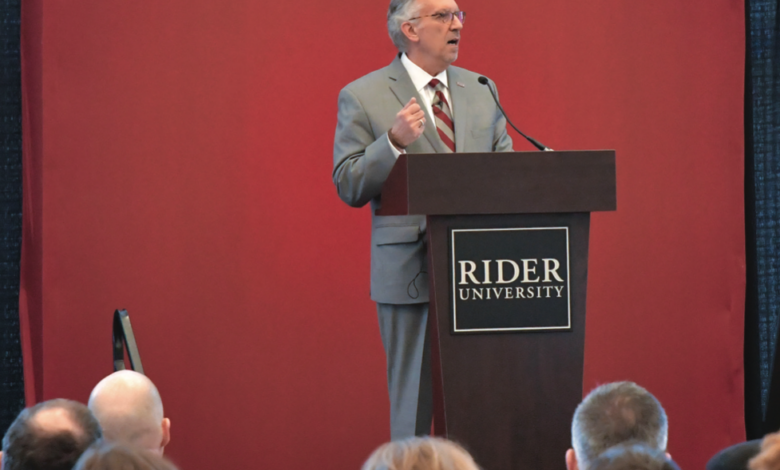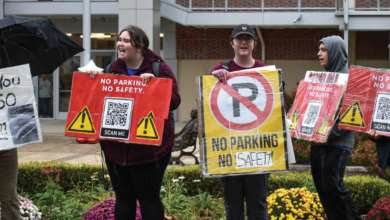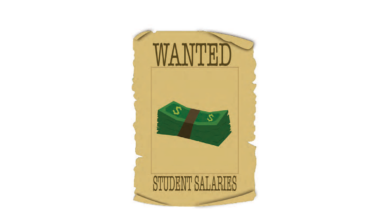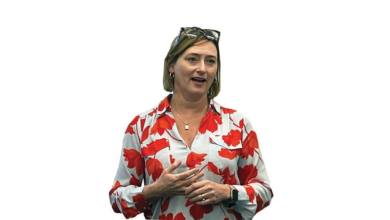
Dell’Omo announces newest cost-cutting innovation
By Sarah Stock and Shaun Chornobroff
In response to nearly two years of great financial uncertainty brought forward by the COVID-19 pandemic, Rider President Gregory Dell’Omo announced a voluntary separation program for certain employees in an attempt to lower the university’s projected $20 million cash-flow deficit.
The program, which was announced on Jan. 24, is the latest cost-cutting initiative put in place to address Rider’s massive budgetary issues. A campus-wide communication said all non-union employees are eligible to partake in the program that is intended to reduce salary and benefit expenses at the university. However, employees who volunteer to resign from their employment at the university will be offered financial incentives that are not normally in place.
Why voluntary separation?
In an interview with The Rider News on Jan. 27, Dell’Omo said the administration has long discussed how the university can bring its expenses more in line with its revenue.
“This was one area that we felt we had to go in this direction. No one ever likes doing anything like this. This is not the ideal situation. But we felt the voluntary separation plan was a way to at least give some employees an informed approach and a little bit of choice in the process,” said Dell’Omo.
Benefits offered to those who sign-up for the voluntary separation program include a lump-sum payment equivalent to one week per year of service for a minimum of six weeks and a maximum of 26 weeks and a payout of all accrued, unused vacation time, up to allowable limits, and any applicable personal time. While all non-union employees can apply for voluntary separation, human resources will ultimately determine who will be approved.
Dell’Omo said the pandemic-related enrollment declines escalated the university’s financial challenges. At the 2021 fall convocation, the president revealed Rider’s total enrollment numbers took a hit with 3,827 students enrolled, which is down from 4,218 students the previous academic year. Recent attempts to cut costs at the university include the closure of the College of Continuing Studies in 2020, elimination of staff positions and salary freezes for top administrators.
Trimming the deficit
Dell’Omo made it clear in an email sent to university employees on Jan. 24 that the voluntary separation program is only the first step in his plan to reduce the university’s monstrous debt and that involuntary reductions will follow unless “the voluntary separation program is sufficient to meet the university’s financial goals.”
“Rider plans to achieve significant savings from voluntary and involuntary reductions of its non-AAUP workforce this year. We will also factor in open budgeted positions that will not be filled to help meet these financial goals, as well as through implementation of other cost-saving measures,” Dell’Omo said in his email to faculty.
In his interview with The Rider News, Dell’Omo said that he hoped to erase the entirety of Rider’s deficit.
“That’s our goal, whether we’ll be able to accomplish that in one year is questionable,” Dell’Omo said honestly. “… When we talk about that $20 million deficit that we’re trying to correct, it’s a combination of people cost savings, operations cost savings, not filling certain positions that are currently open and restructuring some. That way we can work in certain areas, as well as revenue that’s over and above what we projected; enrollment-wise, auxiliary revenues, housing and other things we do. So it’s a combination of all those things that we’re looking at to help how much of that $20 million we can whittle down.”
President of Rider’s Chapter of the American Association of University Professors (AAUP) and political science professor Barbara Franz was critical of the voluntary separation program and said those affected are “crucial” to academic departments.
Franz said, “Before you reduce staff that works directly with students and that provides services for students, [Dell’Omo] should really trim this bloated administration.”
Future changes
When looking toward the future of Rider, Dell’Omo said he wanted to build the university’s endowment to help “safeguard” Rider from unforeseen financial obstacles.
“When you rely on the revenue from students as much as we do, then you’re subjected to the ups and downs of how many students are available. … If you have a strong endowment that allows you to take the interest from that endowment every year and fund a larger percent of your operating budget, you’re not as dependent on student tuition, ” said Dell’Omo pointing to fundraising initiatives and endowment scholarships that can help fund university operations in the future.
Among the catalysts of the many changes set to hit the university shortly are administrative and academic prioritization processes that began last fall. The administrative prioritization is “a little ahead of the academic one,” according to Dell’Omo.
The university president stated that by the end of February, he’s hoping for results of the administrative prioritization process. The administration also anticipates the results of the information for the academic prioritization at the end of March.
Dell’Omo and his cabinet have been the target of consistent skepticism from AAUP leadership for its partnership with the academic consulting firm Credo, which is aiding the university in its prioritization processes. Dell’Omo assured that any final decisions based on the consulting firm’s recommendations will be made by the administration and affirmed his confidence in the decision to partner with Credo.
“They’re just providing sort of a set of eyes and experiences and ideas that we look at,” said Dell’Omo. “So, they aren’t really providing any decision making, they aren’t making any tough decisions. That’s going to be the management, the administration going through this process.”
In the eyes of Dell’Omo and his cabinet, the voluntary and involuntary separation programs, along with the prioritization programs that go hand-in-hand with the Credo partnership serve one purpose: to aid the future of Rider University.
“We want to continue to make Rider as attractive to more students, and more faculty who want to come work here and other people who want to come here,” Dell’Omo said. “We’ve got to continue to figure out those areas of investment that are going to allow you to continue to grow and be more prosperous. And so it’s sometimes you take a step back to take two steps forward in how you approach the university. And that’s [what] we’re trying to accomplish.”


